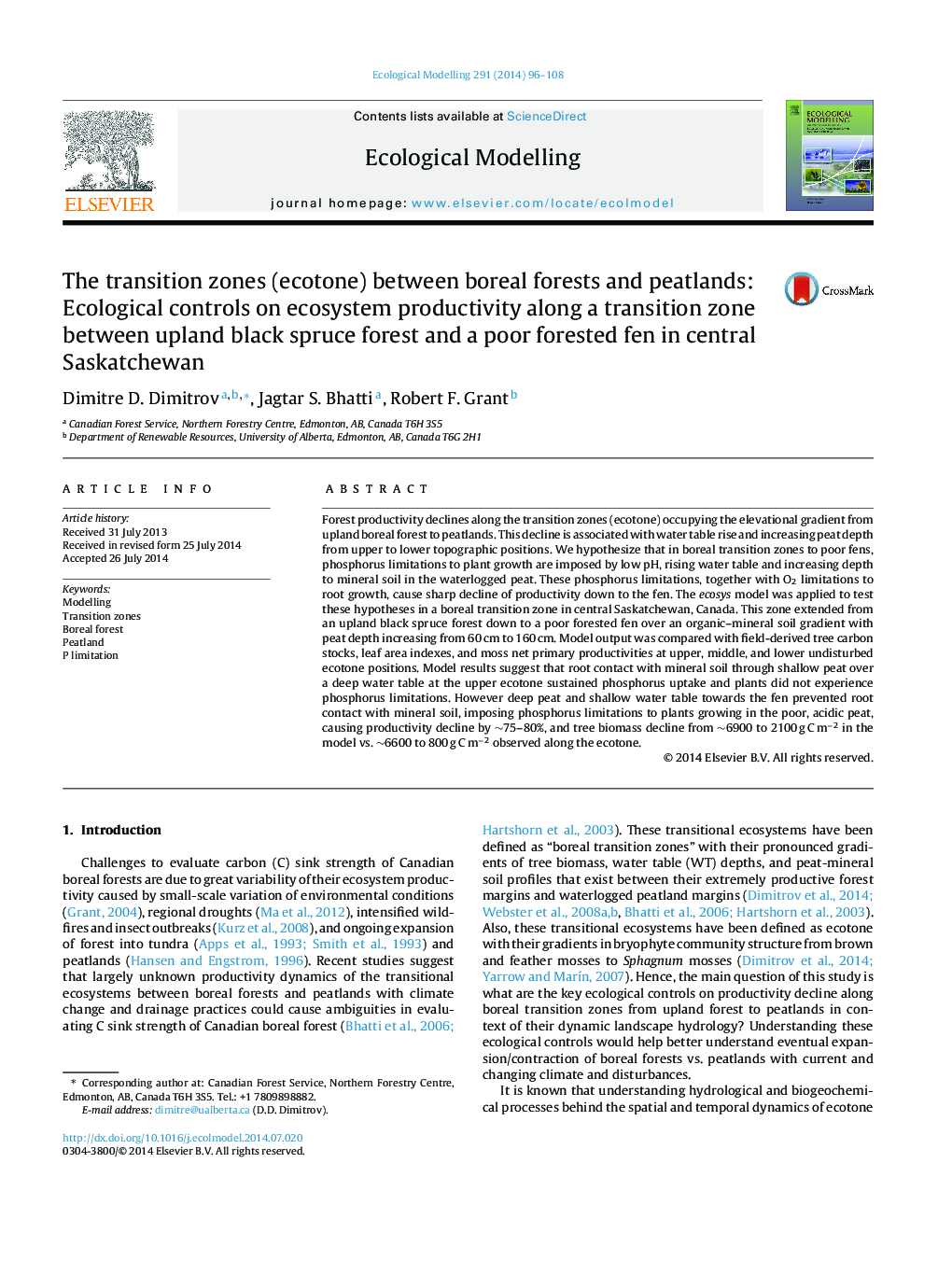| کد مقاله | کد نشریه | سال انتشار | مقاله انگلیسی | نسخه تمام متن |
|---|---|---|---|---|
| 6296744 | 1617455 | 2014 | 13 صفحه PDF | دانلود رایگان |
عنوان انگلیسی مقاله ISI
The transition zones (ecotone) between boreal forests and peatlands: Ecological controls on ecosystem productivity along a transition zone between upland black spruce forest and a poor forested fen in central Saskatchewan
ترجمه فارسی عنوان
مناطق گذار (اکوتون) بین جنگل های بکر و تالاب ها: کنترل محیط زیست بر بهره وری اکوسیستم در امتداد یک منطقه انتقال بین جنگل های سیاه کاج بلند و فرسوده جنگلی ضعیف در ساسکاچوان مرکزی
دانلود مقاله + سفارش ترجمه
دانلود مقاله ISI انگلیسی
رایگان برای ایرانیان
کلمات کلیدی
موضوعات مرتبط
علوم زیستی و بیوفناوری
علوم کشاورزی و بیولوژیک
بوم شناسی، تکامل، رفتار و سامانه شناسی
چکیده انگلیسی
Forest productivity declines along the transition zones (ecotone) occupying the elevational gradient from upland boreal forest to peatlands. This decline is associated with water table rise and increasing peat depth from upper to lower topographic positions. We hypothesize that in boreal transition zones to poor fens, phosphorus limitations to plant growth are imposed by low pH, rising water table and increasing depth to mineral soil in the waterlogged peat. These phosphorus limitations, together with O2 limitations to root growth, cause sharp decline of productivity down to the fen. The ecosys model was applied to test these hypotheses in a boreal transition zone in central Saskatchewan, Canada. This zone extended from an upland black spruce forest down to a poor forested fen over an organic-mineral soil gradient with peat depth increasing from 60 cm to 160 cm. Model output was compared with field-derived tree carbon stocks, leaf area indexes, and moss net primary productivities at upper, middle, and lower undisturbed ecotone positions. Model results suggest that root contact with mineral soil through shallow peat over a deep water table at the upper ecotone sustained phosphorus uptake and plants did not experience phosphorus limitations. However deep peat and shallow water table towards the fen prevented root contact with mineral soil, imposing phosphorus limitations to plants growing in the poor, acidic peat, causing productivity decline by â¼75-80%, and tree biomass decline from â¼6900 to 2100 g C mâ2 in the model vs. â¼6600 to 800 g C mâ2 observed along the ecotone.
ناشر
Database: Elsevier - ScienceDirect (ساینس دایرکت)
Journal: Ecological Modelling - Volume 291, 10 November 2014, Pages 96-108
Journal: Ecological Modelling - Volume 291, 10 November 2014, Pages 96-108
نویسندگان
Dimitre D. Dimitrov, Jagtar S. Bhatti, Robert F. Grant,
